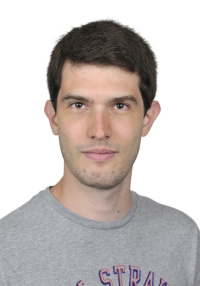Kaloshin Group
Dynamical Systems, Celestial Mechanics, and Spectral Rigidity
The Kaloshin group has achieved considerable progress in studying spectral rigidity and integrability for billiards. Motivated by a famous question: Can you hear the shape of a drum?” we helped prove the Lyapunov rigidity for expanding circle maps satisfying the sparsity condition. In loose terms, it means that if the Lyapunov spectrum, a collection of Lyapunov exponents of all periodic points as proposed by McMullen, is sparse, which is a quantitative form of absence of multiple eigenvalues, then a small perturbation of such a map having the same Lyapunov spectrum is smoothly conjugate to the original map. We also helped construct drums for which there are silent elements of the Laplace spectrum. On the other hand, we studied the existence of locally integral billiards near the period two orbit and the analyticity of the conjugacy map to its Birkhoff normal form. Remarkably, we proved that, generically, such a conjugacy map is not analytic, but only Gerver. Furthermore, we established a diamond KAM theorem and investigated the existence of mushroom KAM tori in the absence of Kolmogorov nondegeneracy. We are also making progress in the construction of isospectral deformations preserving a countable collection of spectral data.
Besides we extended previous results of the group to symplectic billiards. We are also performing a deep analysis of geodesic flows on tori having degenerate behavior with the potential to build a counter-example to a well-known Ivrii conjecture.
Team
Current Projects
Spectral rigidity for chaotic geodesic flows | Rigidity of planar convex domains | Rational caustics of domains with constant width
Publications
Tsodikovich D. 2025. Local rigidity for symplectic billiards. Journal of Geometric Analysis. 35(10), 306. View
Helfter M. 2025. Scales. Mathematische Zeitschrift. 310, 15. View
Kaloshin V, Koudjinan E, Zhang K. 2024. Birkhoff conjecture for nearly centrally symmetric domains. Geometric and Functional Analysis. 34, 1973–2007. View
Hou X, Pan Y, Zhou Q. 2024. Dynamical classification of analytic one-frequency quasi-periodic SO(3,R)-cocycles. Advances in Mathematics. 457, 109943. View
CZUDEK KS, Dolgopyat D. 2024. The central limit theorem and rate of mixing for simple random walks on the circle. Alea. 21(2), 1853–1865. View
ReX-Link: Vadim Kaloshin
Career
Since 2021 Professor, Institute of Science and Technology Austria (ISTA)
2011 – 2021 The Brin Chair in Mathematics, University of Maryland
2008 – 2011 The Brin Chair in Mathematics, University of Maryland & Distinguished Professor of Mathematics, Penn State University
2007 – 2008 The Brin Chair in Mathematics, University of Maryland
2006 – 2007 Associate Professor, Penn State University
2005 – 2006 Associate Professor at Caltech with tenure
2004 – 2005 AIM Research Fellow and Associate Professor at Caltech with tenure
2002 – 2004 Member IAS, AIM Research Fellow, and Associate Professor at Caltech
2001 – 2002 C.L.E. Moore Instructor MIT and AIM Research Fellow
2001 PhD Princeton University
2000 – 2001 Courant Institute NYU and American Institute of Math Research Fellow
Selected Distinctions
2020 ERC Advanced Grant
2020 Gold medal International Consortium of Chinese Mathematics (ICCM)
2019 Barcelona Prize in Dynamical Systems
2017 Simons Fellowship in mathematics
2004 – 2006 Alfred Sloan Research Fellowship
2001 Prize of the Moscow Mathematical Society
2000 – 2005 American Institute of Mathematics Five-Year Fellowship










